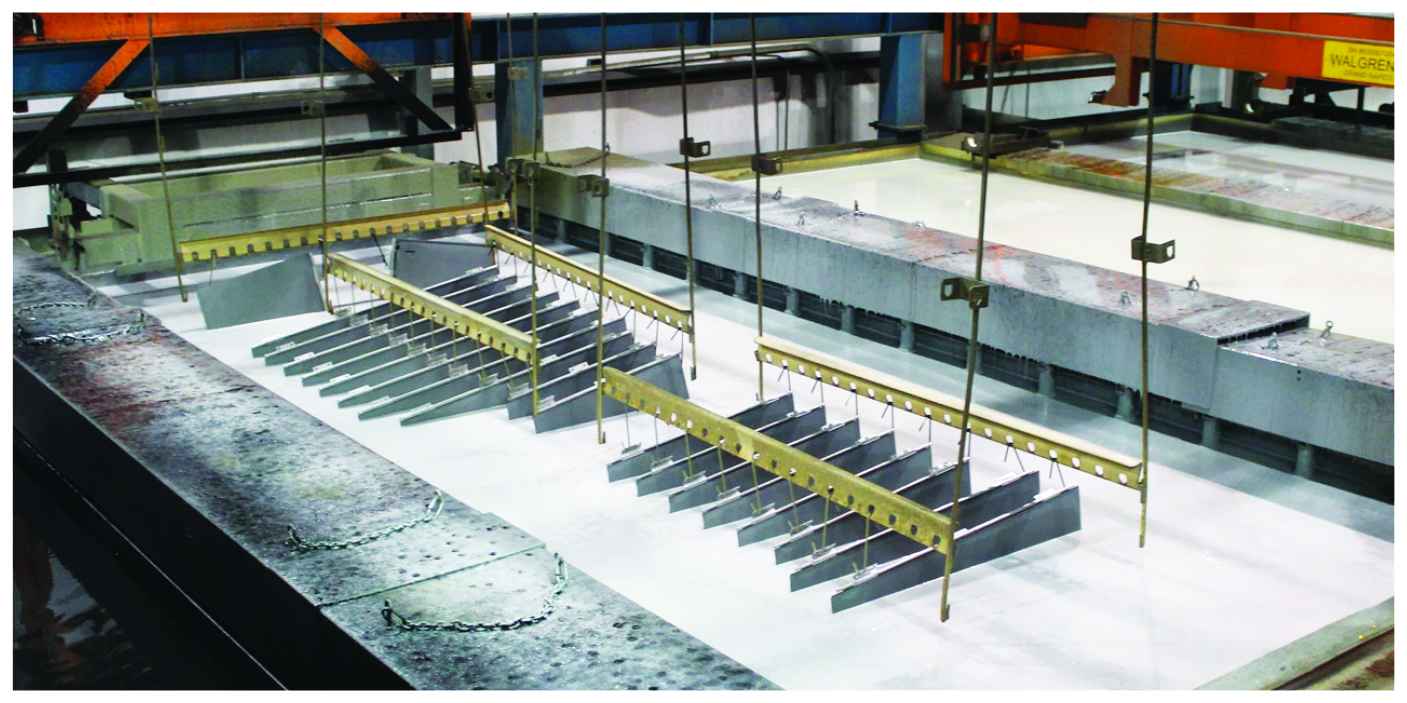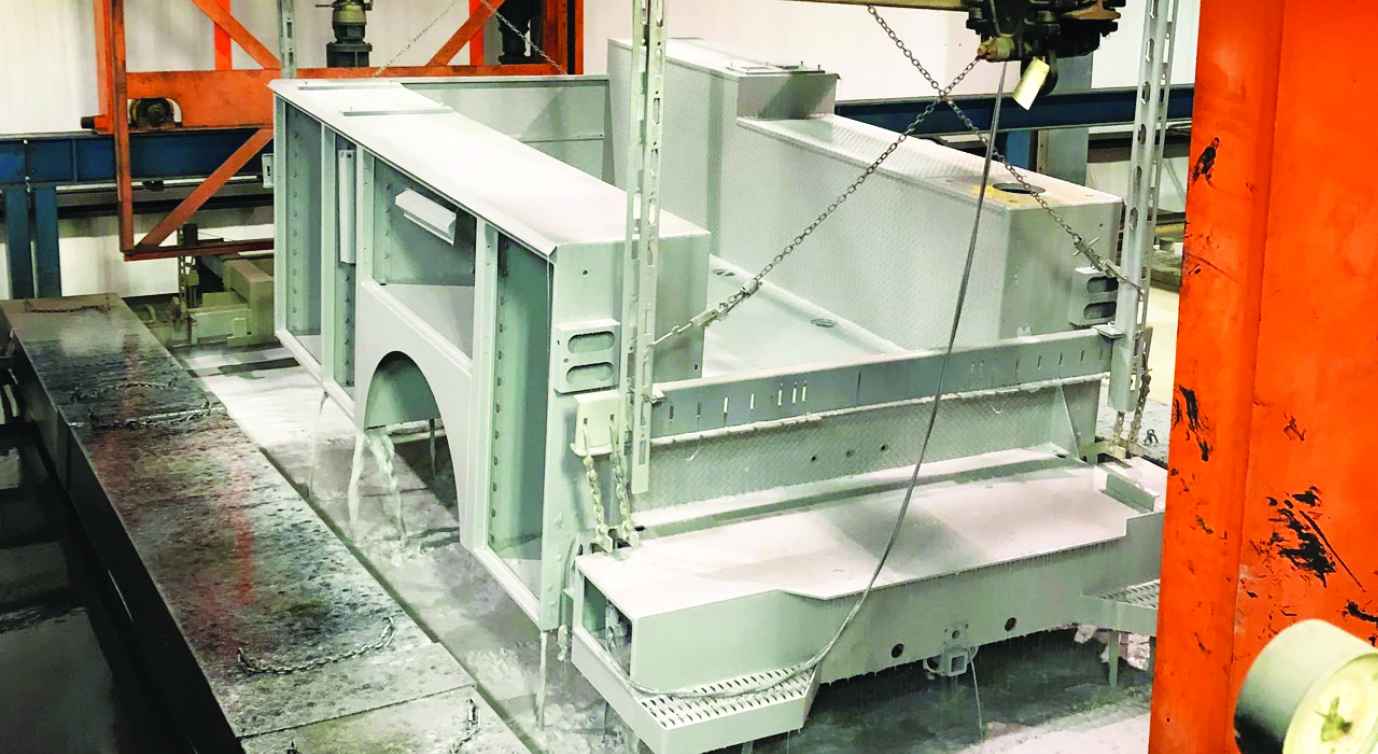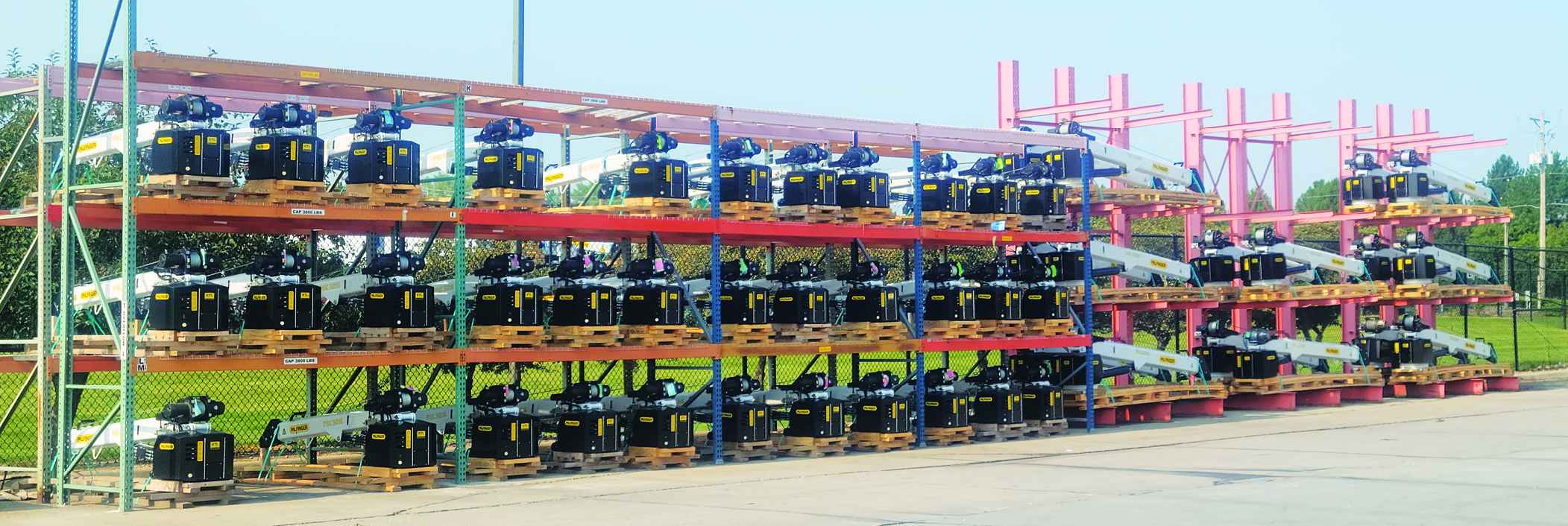Revolutionizing Rust Protection
An Inside Look at a PALFINGER E-Coating Facility
During a recent visit to the PALFINGER facility in Council Bluffs, Iowa, I had the opportunity to witness their famed e-coating process firsthand. When first invited to the facility to watch the process, I made a joke to some coworkers that I was going down there to “literally watch paint dry,” but I was mistaken in thinking that this was just a “typical” painting process.
The entire process involved several tanks — pools of paint, basically — and watching truck bodies and parts get dunked in several different tanks in a fairly automated process was quite remarkable to watch.
That aside, the e-coating process also promises top-notch protection for mechanics trucks from rust and corrosion, ensuring they can withstand the toughest jobsite conditions.

PALFINGER prides itself as the only manufacturer that epoxy electrocoats (e-coat) every crane and truck body they produce. This process is said to significantly extend the lifespan of mechanics trucks, providing unparalleled protection against the elements.
“Our team takes great pride in the long-term value and protection that the e-coat process adds to our mechanics truck bodies and cranes, especially since it is so efficient and environmentally friendly,” said Mike Dempsey, who serves as electrocoat lab and systems manager for PALFINGER North America in Council Bluffs. “The automation technology that is involved in the e-coat process allows us to know specifically the journey each product takes through the tanks, giving us a wealth of data to continually monitor and improve our process.”

The Journey of a PAL Pro Body
“The e-coat process is anywhere from eight to 11 different dip tanks,” Jim Bates, PALFINGER North America senior operations manager for the Council Bluffs facility, told Crane Hot Line.
Each PAL Pro body is immersed in a series of tanks designed to clean oil and residue from the steel in a rigorous pretreatment phase. This is followed by conditioning and zinc phosphating, where microscopic crystals form on the surface, enhancing corrosion resistance and paint adhesion. A final seal rinse applies a protective coating around these crystals, preparing the body for the next stage.

Next, the body is dipped into a paint bath. Here, a direct current is applied, attracting the paint to the product and ensuring a precise thickness. This step is crucial as it guarantees complete and consistent coverage, unlike traditional wand-wash and primer applications.
PALFINGER says that it takes about 45 minutes for the bodies to pass through all the tanks once they enter the pretreatment phase.
When the entire tanking process is complete, the body is then placed in a 375-degree oversized oven, where the e-coat primer is cured and hardened, creating a durable finish ready for the topcoat. It will take approximately 120 minutes in the curing oven.
Once it’s done cooking, the finishing touches involve applying an extraordinarily durable and consistent topcoat in a range of Alexit Monolyer from Mankiewicz single-stage paint colors developed especially for the commercial vehicle sector. For added durability, a white Zolatone coating is used on the interiors of specific models, while a black Ultimate Linings bedliner, developed specifically for the commercial vehicle sector, can be applied to the exterior upon request.
“At this point, paint is pretty much done with the equipment and it’s ready to move out to final assembly where we are updating it so it’s basically ready to be put out on the chassis,” Bates explained. “This is when we’re putting the hydraulic lines on it; we’re putting all the electrical lines for the lights on, and we’re also putting on any of the additional options that have been requested, like compressors, etc. prior to shipping out.”

The Benefits
To ensure the robustness of the e-coat process, PALFINGER puts it through an 800-hour salt spray test. This rigorous test involves scribing panels and exposing them to a corrosive environment for 800 hours. The results, measured by the increase in creepage from the original scribe, demonstrate the coating’s effectiveness as a protective finish.
The use of zinc phosphate in the pretreatment process offers superior protection compared to other finishes like iron phosphate. Zinc phosphate forms a strong foundation that significantly enhances the adhesion and durability of subsequent coatings.
Environmental sustainability is another cornerstone of the e-coat process. The closed-loop rinse system minimizes paint loss and conserves water, while the completely enclosed system ensures a cleaner application with low or zero VOC and HAPs coatings. This approach not only reduces solid waste but also lowers the risk of fire hazards, making it a safer and more eco-friendly option.
“The e-coat process is environmentally friendly which aligns with PALFINGER’s commitment to sustainability,” Dempsey said. “All of the water used in the e-coat process is treated and tested onsite before discharging the clean water to the city where it is recycled for use.”



